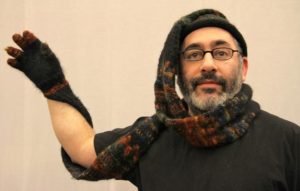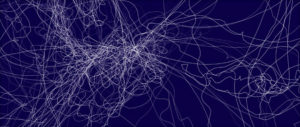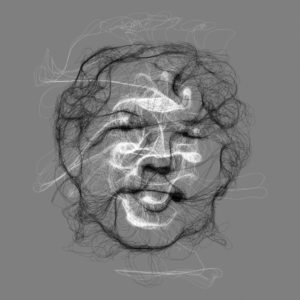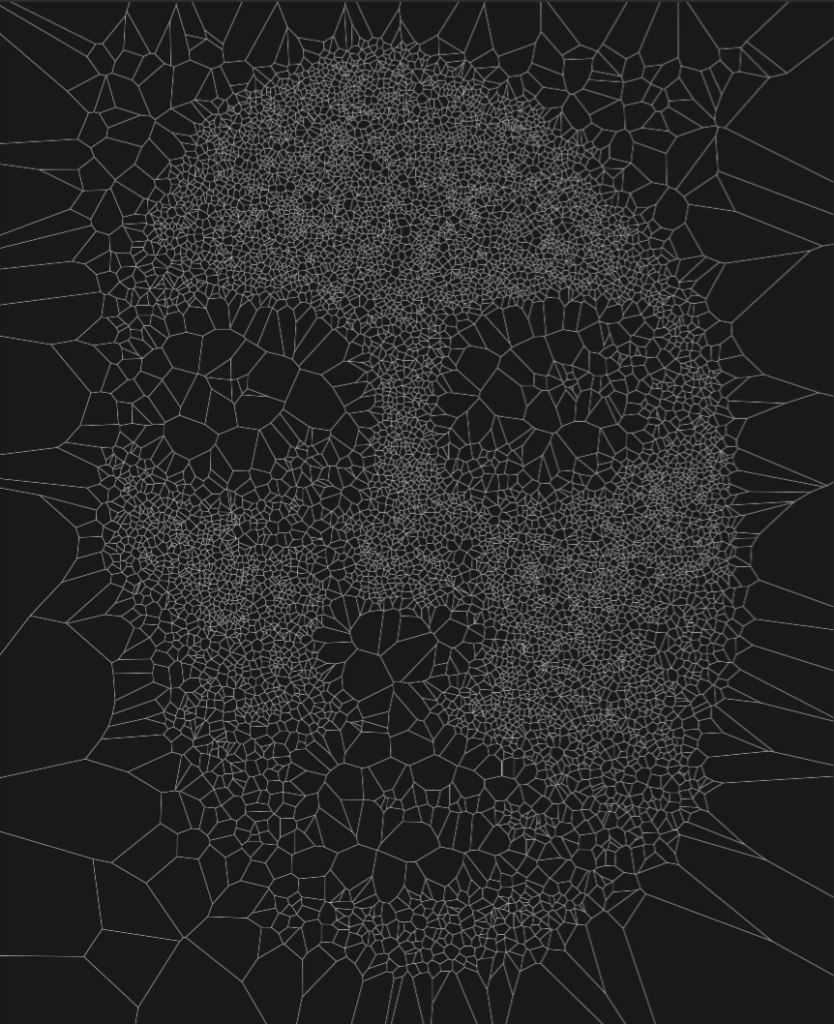
Golan Levin is an American artist, born in 1972, he is a pioneer visual computing artist and has a particular interest in interaction based art engaging with the audience in playful ways.
Levin received a Bachelor’s degree in Art and Design as well as a Masters in Media Arts and Sciences from the Massachusetts Institute of Technology.
His work spans over a wide and eclectic range of themes and techniques, from installations and performances to web experiments and clothes (see below).

Levin presenting the Glharf, a combination of glove, hat and scarf, which supposedly "simplifies dressing for cold weather"[sic].
Golan Levin often emulates with the computer elements of the natural world, he even profess to "get most of [his] inspiration from nature" [1]. Many of his works also explore the human body and it's interaction with technology (see the Augmented Hands Series or Interstitial Fragment Processor for exemple).
Because of the number and diversity of Levin's work I will only present here a non exhaustive and not particularly representative selection of his work.
Floccus(1999)

Floccus
Floccus is one of Levin’s first artwork, with this software he tries to “study the means by which dynamic graphical lines could convey a plausible sense of physicality” [2], giving a natural and realistic appearance to these otherwise very abstract lines.
From the simple Floccus software experiment he then creates the Floccular Portraits(1999), based on photographs. The dark filaments are attracted to the dark regions of the picture and the light ones to the bright regions of the underlying picture. This procedure creates portraits that almost look like they could have been hand drawn. Sometimes the subject is barely recognisable, the images practically look like abstract, existing in an interesting space between figurative and abstract art.

Floccular Portrait
Segmentation and Symptom (2000)
These images are based on photographs and were created using Voronoi diagrams, a pattern which can be seen in nature, for exemples in spider’s web or on leaves, and which gives an organic and slightly uncanny look to these pictures.Levin says “I applied the Voronoi algorithm to repurposed photographs of refugees, for whose fragile condition I felt the delicate filigree of the Voronoi diagram was a compelling match.” [3]
Re:FACE [Portrait Sequencer], Anchorage Version (2007-2010) Is a video based installation similar to the Exquiste Corpse game. The students of the school where it is installed record their face, which are sliced in three parts, the system then rearranges and displays their jumbled up faces. This artwork is intended as a commentary on identity and collective identity (the school at which it is exposed is particularly ethnically diverse).
I appreciate Levin's work because while he uses very diverse mediums and technologies his work never feels 'gimmicky', he does't use a new or flashy technology just for the sake of it. He doesn't push back the technical boundaries but uses sometimes simple means in new and inventive ways. Finally his artworks are never cryptic or scholarly but fun and accessible for anyone, as he says "the audience for my body-tracking artworks should be anyone with a body, and the audience for my eye-tracking artworks should be anyone with eyes."[4]
References
[1] interview by Emma Tilley for ZooWire http://flong.com/texts/interviews/interview_zoowire/
[2] http://flong.com/projects/floccus/
[3] http://flong.com/projects/zoo/
[4] http://flong.com/texts/essays/statement_art_2005/
Published by: myoun013 in creative_research_2016

Comments are closed.